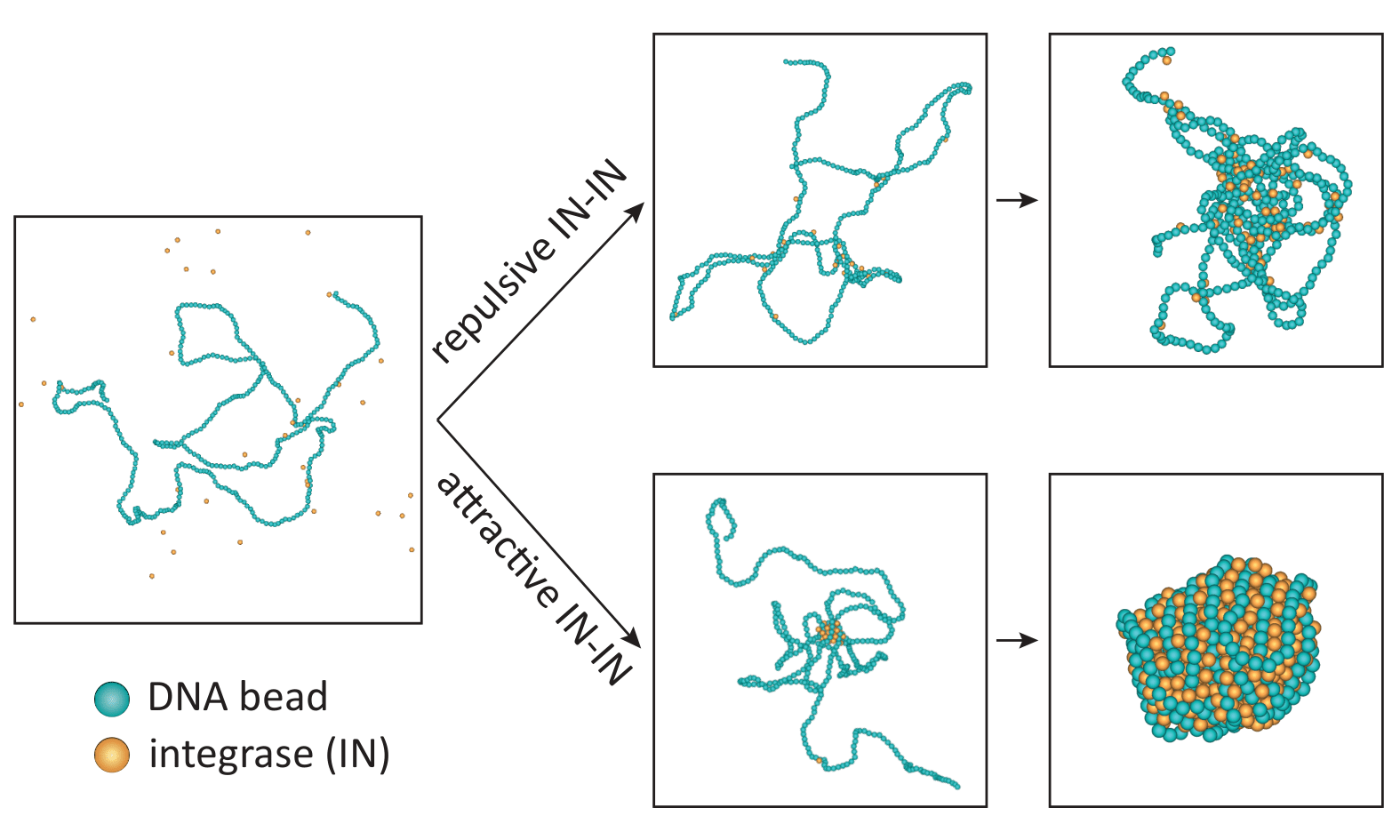
Title: Compaction of HIV DNA: an exploration of the self-assembly pathway
Speaker: Marjolein de Jager (UU)
Abstract:
To establish infection, HIV must traverse multiple cellular micro-environments of human immune cells, using only a limited arsenal of viral proteins. While the majority of the steps in this process are reasonably well understood, the structural self-assembly process of the pre-integration complex (PIC) remains largely unknown. In this talk, I will present our findings on the effect of a specific protein complex called integrase on this self-assembly process. I will start off by showing experimental results which shed light on a new intermediate state of compaction for the HIV DNA: a so-called “rosette”. This rosette consists of a compact core of DNA and integrase with naked DNA loops protruding from it. Next, I will introduce a generalized model for the system which explains these experimental findings. Using computer simulations in combination with unsupervised machine learning, I will show that there generally exist two possible, and completely separate, pathways for the protein-induced compaction of DNA. Which pathway is chosen all depends on the protein-protein interaction (see Figure). For purely excluded-volume interactions, the compaction follows a bridging-induced pathway (top path). Only when the protein-protein interaction has some added form of attraction, will the compaction go via a pathway which includes the rosette state (bottom path).
This seminar will take place in room C4.174